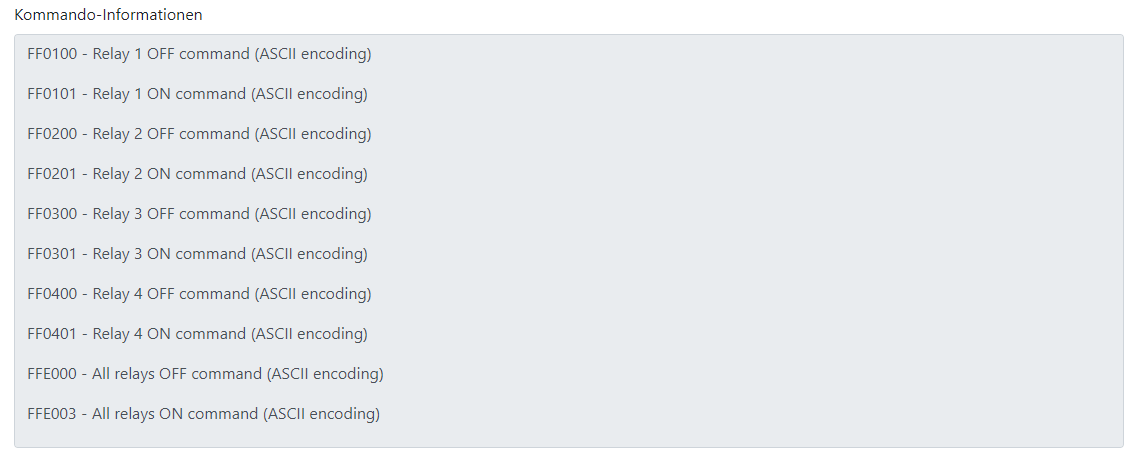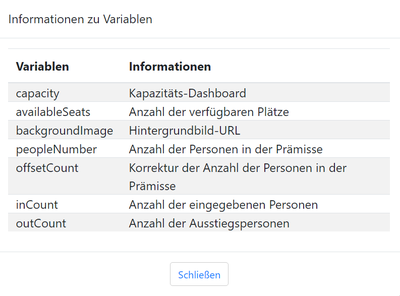People Counter Dashboard
Inhaltsverzeichnis
KBOX A-330-RPI vorbereiten
Download Image
| Version | Download Link |
|---|---|
| 1.3.0.1 | http://nas0.dnsalias.com:5000/sharing/wZzteL0s7 |
Image auf Micro SD Card übertragen
1. Image-Datei über den angegebenen Link herunterladen
2. Archiv extrahieren
3. Das Toool HDDRawCopy1.10Portable im Archiv verwenden, um das Archiv auf die Micro SD Card zu kopieren
Setup XOVIS Kamera
XOVIS Kamera hinzufügen
1. Zunächst den Menüpunkt Devices/ Geräte auswählen.
2. Auf Add/ Hinzufügen klicken.
3. Die entsprechenden Angaben der Eingabefelder ausfüllen. Bitte die URL angeben.
4. Die Anmeldeinformationen für die Kamera angeben.
5. Das Kennwort angeben.
6. In diesem Feld wird die URL des Applikationsservers angegeben (Zieladresse für PUSH Benachrichtigungen von der Kamera).
7. Speichern.
Kamera Anmeldeinformationen anpassen
1. Wenn die Anmeldeinformationen angepasst werden müssen, bitte hier klicken.
2 Danach Edit/ Bearbeiten auswählen.
3. Jetzt können hier Anpassungen vorgenommen werden.
4. Anpassungen speichern.
Kamera entfernen.
1. Die zu enfernende Kamera bitte auswählen.
2. Auf den Button Delete/ Löschen klicken.
Zusätzliche Feldbezeichnungen.
Das Statussymbol zeigt den Verbindungstatus der Kamera an. Grün bedeutet, es besteht eine Verbindung zu der Kamera, rot bedeutet, aktuell besteht keine Verbindung zu der Kamera.
Die Statusverbindung kann auch geprüft werden, wenn man einfach auf den Kameralistenbereich klickt.
Dieses Feld zeigt den Verbindungsfehler.
MAC-Adresse der Kamera. Dieses Feld wird automatisch von der Anwendung belegt.
Setup Dashboards
Dashboard hinzufügen.
1. Menüpunkt Dashboard auswählen.
2. Den Reiter Dashboards auswählen.
3. Auf Add/ Hinzufügen klicken.
4. Den Namen des Bereiches definieren und eingeben.
5. Hier sollte ein eindeutiger Name ohne Leerzeichen angegeben werden, der mit einem Kleinbuchstaben beginnt. Dies ist ein Schlüsselwort. Beispiel: Wenn der Name "Test" definiert worden ist, kann man den Namen "test" verwenden..
6. Hier kann ein visuelles Layout für die Darstellung angegeben werden. Zum Beipsiel:
7. Definition des Hintergrundbildes für das "Basic" Layout. Wenn ein Bild importiert werden soll, kann man es hier hochladen. Weitere Details kan man unter diesem Link finden: upload files
8. Dieses Feld kann verwendet werden, wenn ein Offset für den Zähler angegeben werden soll (z. B. wenn sich bereits Personen in der Nähe befinden, der Zähler der Kamera jedoch Null ist)..
9. Auf Add/ Hinzufügen klicken, um eine Kamera hizuzufügen.
10. Bitte eine Kamera auswählen, die zuvor hinzugefügt wurde. Wenn keine Kamera existiert, bitte auf diesen Link klicken setup XOVIS cameras
11. Erkennungstyp auswählen.
12. Enter the name line.
13. Here we specify the maximum capacity of the number of people.
14. Here you can specify the schedule restart counter time. If you need to specify more than 2 values, be sure to separate them with a semicolon.
If you need to change the text translation on Dashboard by interval:
15. To add the ability to select a language, click the Add/ Hinzufügen button as many times as you need the languages.
16. Choose a language.
17. Enter the language switching interval in seconds.
18. And save it.
Change Dashboard credentials
1. If you want to change dashboard data just click on the dashboard list area.
2. Then click on the Edit/ Bearbeiten button.
3. After that you can change dashboard data. 4. And save changes.
Delete Dashboard.
1. To remove unwanted Dashboard, mark them.
2. And then click on the Delete/ Löschen button.
Setup Executable Devices
Add Executable Devices
1. To add a new executable device, you firstly need to select the Devices/ Geräte tab.
2. Select the Executable Devices/ Ausführbare Geräte tab.
3. And then click on the Add/ Hinzufügen button.
4. Select the type of executable device communication protocol.
5. Here you should specify the executable device URL.
6. And Save it.
Change Executable Device credentials
1. If you want to change executable device data just click on the executable device list area.
2. Then click on the Edit/ Bearbeiten button.
3. After that you can change executable device data.
4. And save changes.
Delete Executable Device
1. To remove an executable device, mark them.
2. Be careful! Do not remove an executable device that is used. Click on the Delete/ Löschen button.
Additional field designations.
Command Information/ Kommando-Informationen contains information about commands to control the device.
Setup Output Signals of Executable Device
Add Output Signals
1. To add new output signals, you firstly need to select the Devices/ Geräte tab.
2. Select the Output Signals/ Ausgangssignale tab.
3. And then to click on the Add/ Hinzufügen button.
4. Enter here the name of the output signals.
5. Here you should select an area.
6. Here you should choose the executable device URL.
7. Insert the command of a high level of the executable device.
8. Insert the command of a low level of the executable device.
9. Here you can specify transition delay time.
10. This field is necessary to specify the condition of relay triggering.
Information about Variables
11. Save it.
Change Output Signals credentials
1. If you want to change output signals data just click on the output signals list area.
2. Then click on the Edit/ Bearbeiten button.
3. After that you can change its data.
4. And save changes.
Delete Output Signals
1. To remove unwanted Output Signals, mark them.
2. Click on the Delete/ Löschen button.
Upload files to the server
Add Files.
1. Add a new area, you firstly need to go to Dashboard.
2. Select the Image Assets/ Bild-Assets tab.
3. And then click on the Add/ Hinzufügen button and select a file on your file system. If a file is uploaded to the server, you can see it in the file list.
Show uploaded image files.
1. If you want to see image files just click on the file list area.
Delete Files.
1. To remove unwanted files on the server, mark them. Preset files can't be deleted.
2. And then click on the Delete/ Löschen button.
Users
Add a user
1. To add a new user, you firstly need to select the System tab.
2. Click on the Users/ Benutzer tab.
3. Then click on the Add/ Hinzufugen button.
4. In this field you should specify Login/ Anmeldung for a new user
5. In this field you should specify Password/ Passwort for a new user
6. If you want to grant the user administrator rights, tip this field. (Administrative rights give rights to edit, create, delete and view. And the standard rights only to view.)
7. Click on the Save/ Speichern button to complete the adding of a new user.
Change user credentials
1. If you want to change user data just click on the user list area.
2. Then click on the Edit/ Bearbeiten button.
3. After that you can change user data. 4. And save the changes.
Remove a user
1. To remove unwanted user, mark them. Preset files can't be deleted.
2. And then click on the Delete/ Löschen button.
Change browser configuration
Reload browser configuration.
1. To display, you firstly need to go to System.
2. Select the Display/ Bildschirm tab.
3. If you need a mouse cursor to be displayed in the kiosk, tip this field.
4. Enter the display URL.
5. Click on the Save button.
6. Then click on the Reboot button.
Network
Network Setup.
1. To configure or view the network settings, you firstly need to go to System.
2. Select the Network tab.
There are two methods of network configuration.
The first method:
- Tip the field.
- Click on the Save button.
- Then click Reboot button. And the DHCP server will automatically give the necessary settings.
The second method:
- Specify an IP address.
- Enter netmask.
- Input address of the gateway.
- Now fill in the DNS IP address.
- And then clock on the *Reload* button.




















































